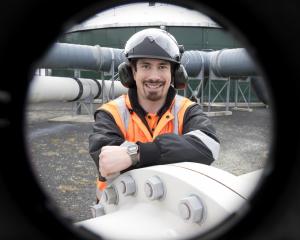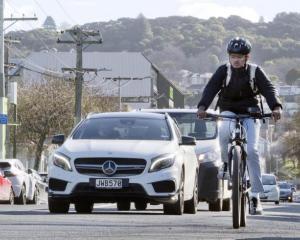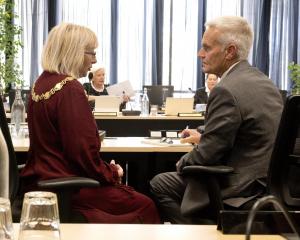
The two councils have together committed up to $80,000 to pay for a feasibility study, to be prepared by consultants MartinJenkins and Roam, detailing the potential for the project.
A report detailing options for a trail between the two centres, together with the likely costs, funding avenues and community benefits, is expected by the end of the year.
Staff from the two councils will then meet to discuss the findings and plan a way forward, including putting the project to elected representatives for decisions.
DCC transport group manager Richard Saunders said when contacted the idea of a joint approach had originally been suggested by Waitaki council staff.
The proposed trail would boost cycle trail tourism and recreational opportunities for residents, bringing benefits to Dunedin, Oamaru and the communities in between, he said.
It would also provide an important link in an expanding network of cycle infrastructure being developed, or planned, across Otago, he believed.
It would link the Alps 2 Ocean trail - New Zealand's longest continuous cycle trail, stretching from the Southern Alps to Oamaru - with Dunedin.
Eventually, it would connect to other trails, like the Clutha Gold trail when it reached as far as Mosgiel, and the tunnels trail link between Mosgiel and Dunedin via the former Chain Hills rail tunnel, Mr Saunders said.
''When you combine that with the other cycling infrastructure ... it starts to become quite an exciting picture as a network.''
Waitaki District Council recreation manager Erik van der Spek said the feasibility study was the first ''concrete work'' on a project that had been on the council's to-do list for years.
Any trail would be at least as long as the 112km journey by road between Dunedin and Oamaru, was expected to cost ''millions'' and take years to build, if it proceeded, Mr van der Spek said.
It would have other obstacles to overcome, including finding a suitable route and deciding how best to cross rivers along the way, he said.
That could require clip-ons to existing bridges or the construction of new bridges for cyclists, he said.
The study would also look at potential funding sources, such as the NZ Transport Agency, Provincial Growth Fund or the Ministry of Business, Innovation and Employment, he said.
Both councils' elected representatives would also be presented with the results of the feasibility study, once finished, and would have to decide how they wished to proceed.
Comments
Another delusional idea. There is no disused rail track to use as a cycle path- that is what makes the Central Rail Trail relatively easy. As some one who has actually cycled Dunedin-Oamaru awhile back- it is just too difficult given the terrain. Just think how competent the DCC has been in putting a few km of cycle path on relatively flat portions of Dunedin and magnify those problems a hundred times... what are these guys smoking?
Multi million would be a gross understatement. Last year the couple of k's to get top Port Chalmers was set at $28 million. This pipe dream has to cost several hundred millions to get to Waitati alone. Plus the Caversham & Wingatui tunnels these fools have stuck on the back burner.
Pure economic vandalism.
We could of course just close all the railways down and turn it all into bike tracks. The greens wouldn't mind a few extra trucks on the roads would they? Or maybe the cyclists can just tow a container behind them to save energy. Yeah, both ideas are just dumb.
It's great to see these two councils working together on this. Cycle tourism was a massive thing last summer and is only going to increase more.
Tourists want to be outdoors enjoying our beautiful country but we have a bad cycle safety reputation which is going to need infrastructure to solve.
I can't help but wonder why the Chain Hills and Caversham tunnels are not a priority though, given Mosgiel is the fastest growing satellite to Dunedin, which is reflected in the growing traffic congestion at peak times.
A flat commute by bike, away from the busy roads would make a massive difference.
The unfinished Port path is a great example of increased cycle commuting, resulting from the provision of a safe option.
Well done both councils for your foresite!













